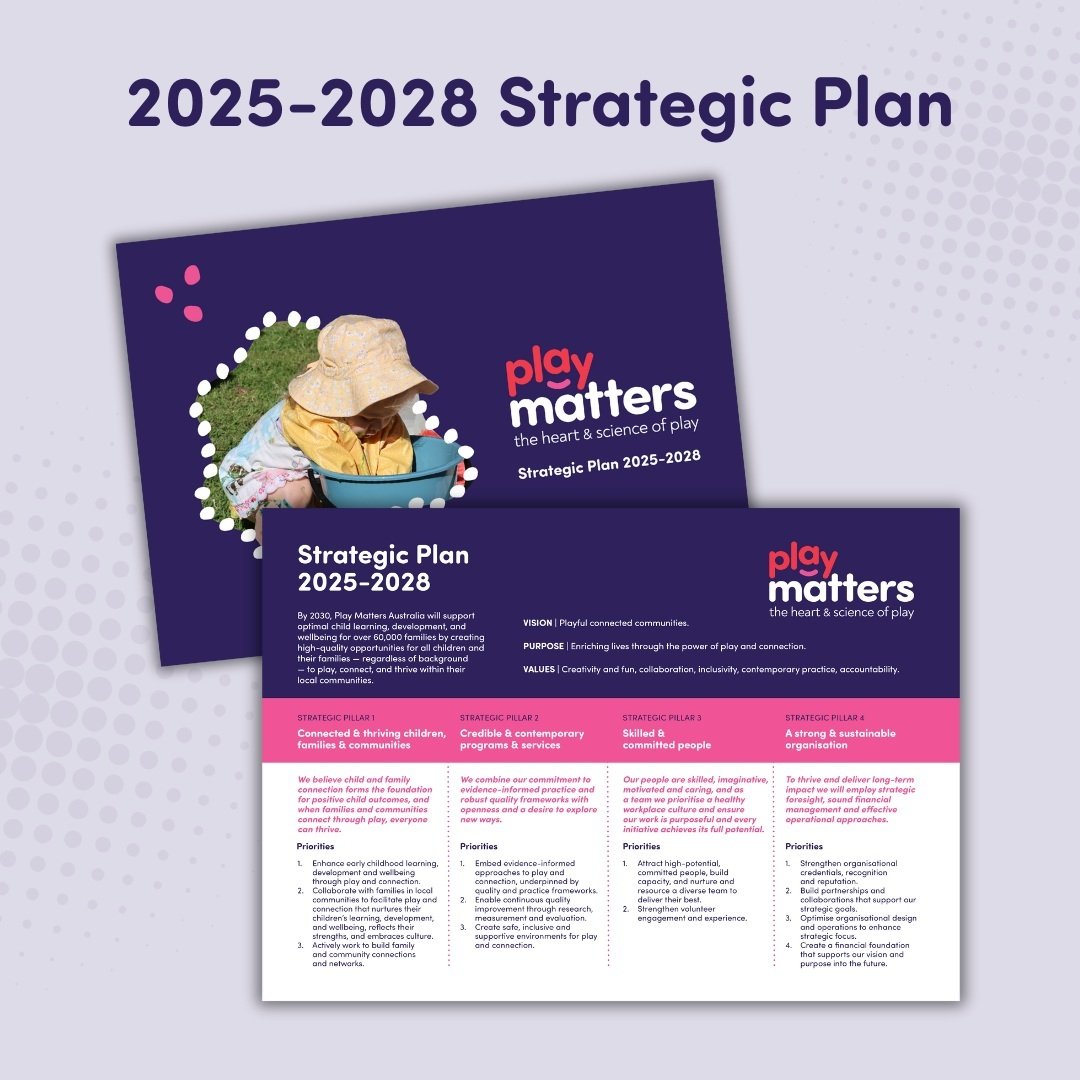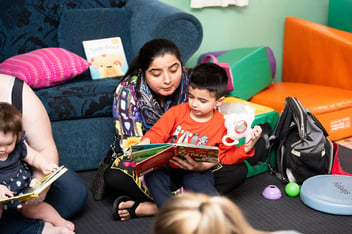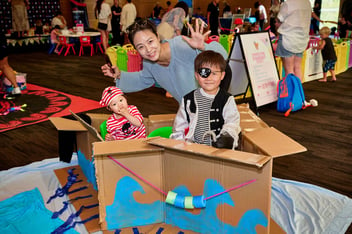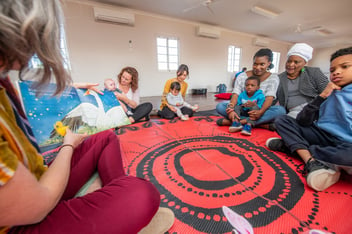
Building Blocks for Literacy Development
Blog > Building Blocks for Literacy Development

Building Blocks for Literacy Development
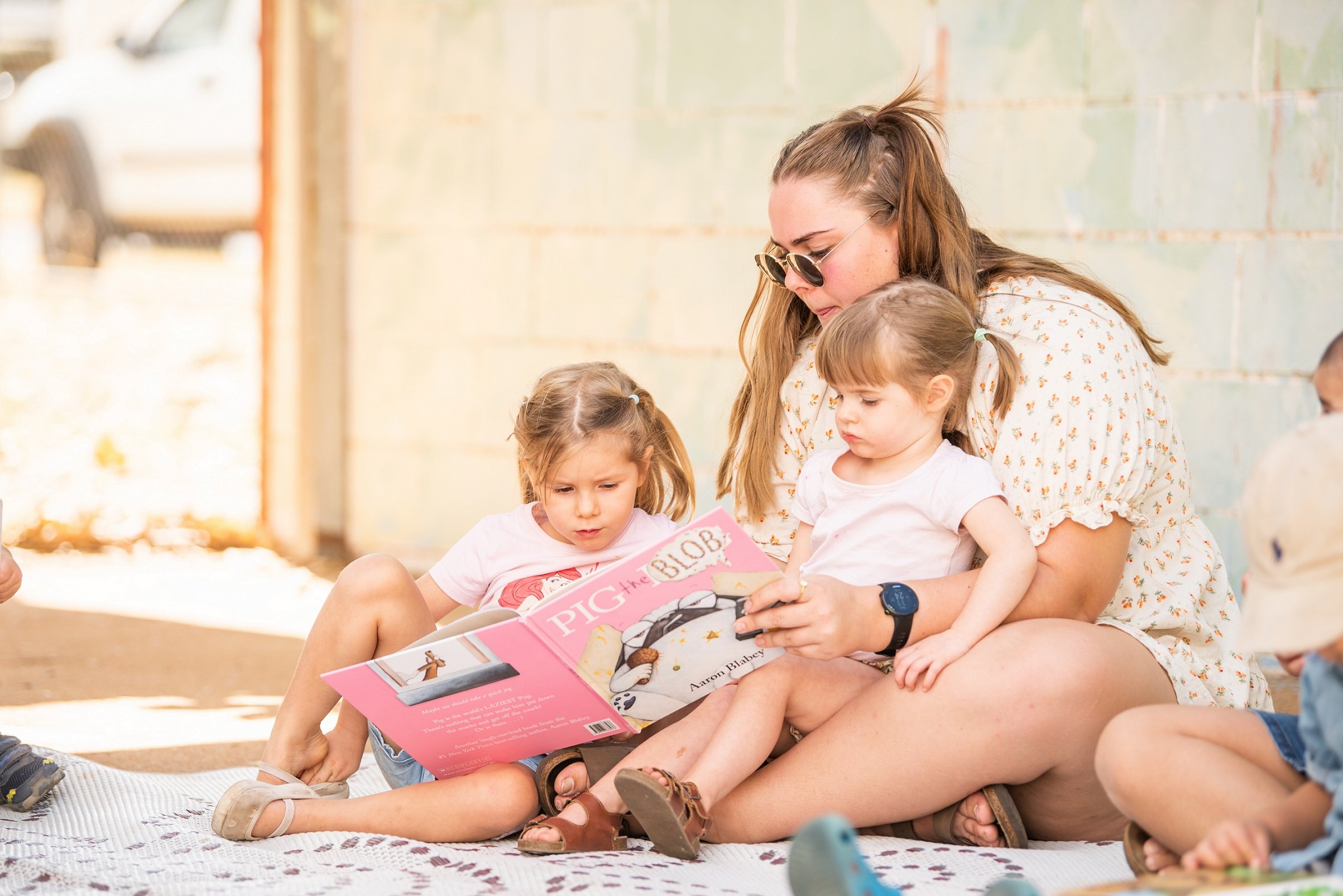
How play, communication and daily interactions shape lifelong learners.
Literacy is more than just reading and writing. It’s how we connect, communicate and make sense of the world around us. From chatting with family to exploring stories and sounds, literacy gives children the tools to think deeply, express clearly, and build healthy relationships, at home, in playgroups, and beyond.
Before children can read and write, they need strong foundations in listening, speaking, watching and drawing. These pre-literacy skills help children begin to understand the link between spoken sounds and written letters which is a key step in the journey to confident communication.
Children are born ready to learn and some of the best learning comes from nurturing relationships and during the first few years after birth, more than 1 million new connections between neurons form every second. Early experiences affect the nature and quality of the brain’s developing architectures.
Shared activities at home and out and about in the early years are important in the development of language skills later on, and research highlights the significant role that parents play in helping their babies build a strong foundation for future learning.
.jpg?width=1320&height=881&name=PLAY%20MATTERS%20(189).jpg)
Children build literacy through repeated exposure to:
- Pictures and objects: learning how language can be used to describe and make links with what they see and are connecting with
- Letters and words: recognising how they look and sound from repeated exposure
- Sounds: identifying rhymes, syllables and blended phonics by engaging in fun songs, books and other activities
Each time children talk, sing, scribble or share a book, their brains form connections that support language, comprehension and critical thinking. Without these rich experiences which can be embedded in everyday play and conversation the brain misses vital developmental opportunities.
Talking with your child is one of the simplest and most powerful ways to support literacy development.
You could try:
- Narrating your day: “Let’s get the washing now” or “Look at the green leaves”
- Naming emotions: “You’re smiling, are you feeling happy?”
- Emphasising sounds and syllables: “ba-na-na”, “b-b-ball”
- Following their lead: “What do you think it is?”
- Encouraging story-making, singing family songs, and sharing cultural expressions
By talking and responding often, children learn how words work, how others feel, and how to express themselves confidently.

Reading from birth, even a few minutes a day, strengthens bonding and builds a child’s vocabulary and comprehension.
Encourage literacy through reading by:
- Choosing sensory and rhyming books
- Sliding your finger across each word as you read
- Talking about illustrations and asking open-ended questions
- Relating book content to real-life experiences
- Exploring new words and concepts in conversation
- Visiting local libraries and joining community story times. First Five Forever is a great resource for connecting with local library sessions and online sessions.
- Sharing books in multiple languages if your family is multilingual. Play Matters own “Let’s Play” is currently being translated into several different languages to connect with multilingual communities and affilitated play experiences.
These moments of shared reading create safe, joyful opportunities to explore language, emotions and ideas. Many books aimed at the early years encompass lots of rhyming and repetition. Rhyming helps children break down and understand the smaller sounds that make up words which is the foundation for critical skills required when they begin to read and write.
You can support this by:
- Playing rhyming games: “cat, hat, mat”
- Trying tongue twisters and silly sound challenges
- Reading rhyming stories like “Ten Little Fingers and Ten Little Toes” by Mem Fox or “Pig The Pug” series by Aaron Blabey
- Making up nonsense rhymes while playing, cooking, or walking

Embedding Language in Play
Whether it’s pretend cooking, dress-ups or outdoor adventures, play is a natural place for language to blossom.
- Encourage turn-taking, storytelling, and idea sharing
- Set up play that sparks conversation and symbolic thinking
- Follow the child’s lead, when they’re in control, they’re more engaged
- Use rich vocabulary in role-play: a shopkeeper, doctor, explorer or animal expert
Children use play to rehearse life, learn social cues and test out words and phrases in safe, imaginative environments. Adults can scaffold this by offering new words, modelling interactions, and creating space for child-led storytelling.

Whether you’re singing a family song, drawing chalk pictures together, or talking about bugs on a nature walk, you're building your child’s literacy in ways that feel joyful, empowering and deeply connected.
With every question, description and shared story, your child is learning how to communicate, imagine, and navigate the world, through the beautiful language of play and learning key early literacy foundations.
Resources:
Play as a teaching practice for literacy, Victorian State Government (2025), Play as a teaching practice for literacy | vic.gov.au
Literacy Development In Children, Raising Children Network (2025), Literacy development in children | Raising Children Network
Why are the first five years so important? State Library of Queensland (2020), First 5 Forever
Center on the Developing Child, Harvard University (2016). From Best Practices to Breakthrough Impacts.
Australian Institute of Family Studies (2014). Children’s Early Home Learning Environment and Learning Outcomes in the Early Years of School
Find a play experience near you:
Subscribe to our newsletter >
Related content:
Advertisement:
.jpg)
.jpg)
